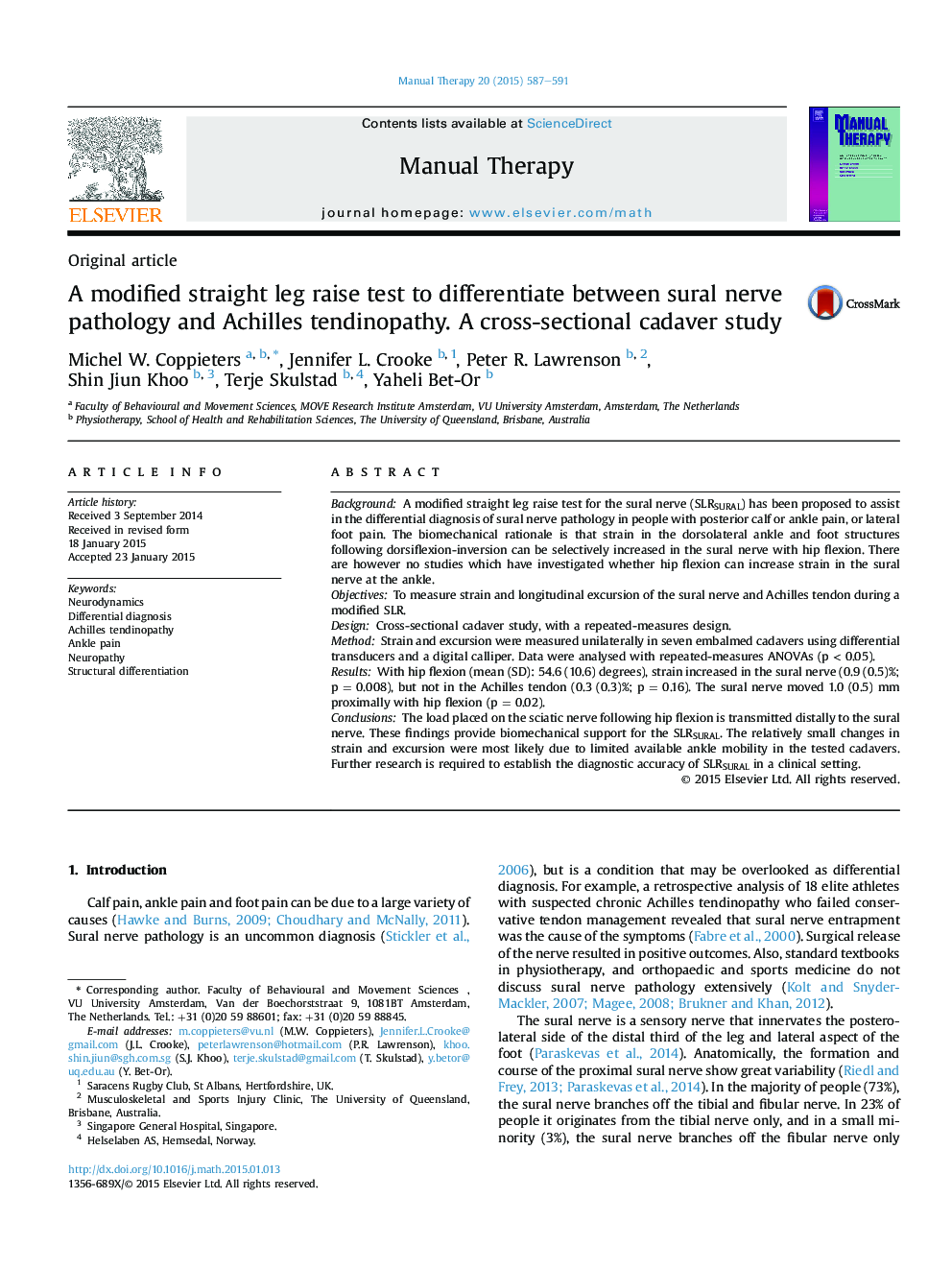| Article ID | Journal | Published Year | Pages | File Type |
|---|---|---|---|---|
| 2625005 | Manual Therapy | 2015 | 5 Pages |
BackgroundA modified straight leg raise test for the sural nerve (SLRSURAL) has been proposed to assist in the differential diagnosis of sural nerve pathology in people with posterior calf or ankle pain, or lateral foot pain. The biomechanical rationale is that strain in the dorsolateral ankle and foot structures following dorsiflexion-inversion can be selectively increased in the sural nerve with hip flexion. There are however no studies which have investigated whether hip flexion can increase strain in the sural nerve at the ankle.ObjectivesTo measure strain and longitudinal excursion of the sural nerve and Achilles tendon during a modified SLR.DesignCross-sectional cadaver study, with a repeated-measures design.MethodStrain and excursion were measured unilaterally in seven embalmed cadavers using differential transducers and a digital calliper. Data were analysed with repeated-measures ANOVAs (p < 0.05).ResultsWith hip flexion (mean (SD): 54.6 (10.6) degrees), strain increased in the sural nerve (0.9 (0.5)%; p = 0.008), but not in the Achilles tendon (0.3 (0.3)%; p = 0.16). The sural nerve moved 1.0 (0.5) mm proximally with hip flexion (p = 0.02).ConclusionsThe load placed on the sciatic nerve following hip flexion is transmitted distally to the sural nerve. These findings provide biomechanical support for the SLRSURAL. The relatively small changes in strain and excursion were most likely due to limited available ankle mobility in the tested cadavers. Further research is required to establish the diagnostic accuracy of SLRSURAL in a clinical setting.
